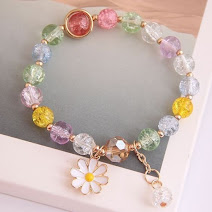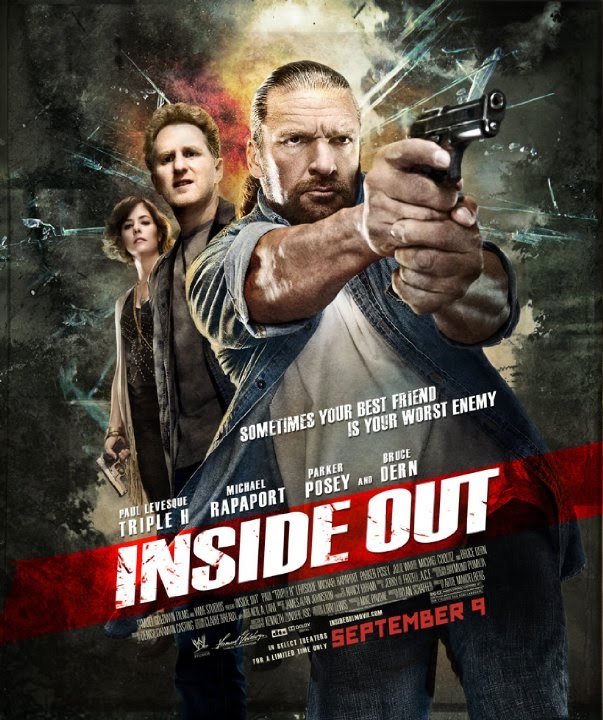The sight of former World Wrestling Entertainment Inc. wrestler Paul Levesque, best known as “Triple H;” his wife Stephanie McMahon, who has notched up several stints in the ring herself; and their security entourage at the Cannes Lions advertising festival earlier in June turned some heads.
Unlike some of the celebrities invited to Cannes by ad agencies hoping to pull big crowds inside the sessions at Palais conference center, Mr. Levesque and Ms. McMahon were chiefly there to educate attendees about what WWE stands for. Mr. Levesque is now the entertainment company’s executive vice president of talent, live events and creative, and Ms. McMahon is WWE’s chief brand officer and the daughter of CEO Vince McMahon.
One of WWE’s key missions this year is to build its corporate brand. Ms. McMahon has been increasing her speaking engagements at business events, and Cannes was a vehicle to boost awareness about how and why brands should partner with the entertainment company through sponsorships and advertising.
“I think sometimes we still get stuck with people not knowing who we are and not knowing how to define us,” Mr. Levesque said, adding that people are often shocked by the company’s numbers.
WWE generated $729 million in revenue last year, up 11% from 2015. The company says it has more than 800 million social media followers and generated 12 billion views in the last 12 months on YouTube. WWE is the number one “sports” channel on the video platform, YouTube confirmed.
Around two-thirds of WWE’s revenue is tied to TV rights fees, subscriptions and advertising, while the rest comes from selling live events tickets and products. In the U.S., WWE airs five hours of prime-time programming a week on NBCUniversal’s USA Network all year round, and that rights deal comes up for renewal in 2019. Its WWE Network, a Netflix-style streaming service for wrestling that costs $9.99 a month, had 1.95 million subscribers after its most recent WrestleMania event in April.
When WWE first launched its subscription streaming service in 2014, there were some concerns it could cannibalize its live TV audience.
But ratings remain relatively strong. In April 2017, for example “WWE Entertainment” and “WWE Smackdown” on the USA Network averaged over 3.5 million viewers either watching live or watching on-demand within seven days, according to Nielsen. That was up slightly from the 3.4 million viewers watching those programs in April 2016, according to Nielsen’s figures.
WWE’s executives will be hoping its performance in the ratings will help it gain leverage in the next round of rights negotiations. Brandon Ross, an analyst at BTIG Research, estimates NBCUniversal is paying around $150 million a year on average for WWE rights--“a fraction” of what top sporting leagues demand for their content on a per viewer hour basis. WWE declined to comment on that figure, and NBCU didn’t respond to a request for comment.
When WWE’s ratings deal comes up for renewal in 2019, “even if they got a 50% increase from where they are now, it would pale in comparison on a per eyeball basis to what other live sports can get,” Mr. Ross said.
WWE has several tiers for its content: linear TV, “originals” where it releases documentaries and reality shows like “Total Divas,” advertising-funded video-on-demand on platforms like YouTube, and its pay-per-view products. WWE created 1,500 hours of original content in 2016.
WWE says it has attracted around 50 “blue chip” sponsors over the past two years. Recent brand partners have included Mars, KFC, PepsiCo, Nestlé and Mattel.
Still, boosting WWE’s appeal to more advertisers may have its challenges, according to Mr. Ross. Although staged, its main events are still fights, and there is the perception WWE attracts “a lower income audience with less wallet than other programs,” according to Mr. Ross.
A WWE spokesman responded, saying: “The reality is that WWE has a massive, young, diverse and multigenerational audience that is proven to have significant spending power, reinforced by our blue chip advertisers and sponsors.”
The NXT developmental competition, which airs on the WWE Network, is a key area of growth for WWE. The company is also aiming to expand more internationally, particularly in China, where it launched a media partnership with PPTV last year, and in India, where Ms. McMahon says WWE is second only to cricket in terms of social media followers in the sports category.
“If you take all our platforms, all of the viewership, 70% of our viewership comes from outside the U.S., but only 30% of the revenue comes from outside the U.S.,” Mr. Levesque said. “It’s a huge opportunity.”
WWE has also made efforts to build the profile of women. At one time, women in wrestling were mostly there to be looked at and were called “Divas,” not “Superstars” like male wrestlers.
Things changed in 2015—a year that hosted a tag match between female wrestlers Brie and Nikki Bella vs. Emma and Paige that lasted just 30 seconds—when fans began demanding women’s wrestling be elevated to the main roster. The protest hashtag #givedivasachance trended world-wide for three days as fans called for more athleticism, enhanced characters and better story lines for female WWE athletes.
The following year, WWE rebranded its Divas division, announcing that all its performers would be known as “Superstars,” no matter which gender.
“It’s not just because we see it as this movement or thing to jump on,” Mr. Levesque said. “Any day of the week, I can go through our ratings numbers and the women will have the highest-rated segments of the night across the board.”
About 40% of WWE viewers are now women, thanks to the number of families that watch its shows.
That’s a key stat for marketers and could encourage more brands to partner with the entertainment company. WWE creates content that “appeals to both children and adults” that has to be compelling for both, “like a Disney movie,” Ms. McMahon said.















